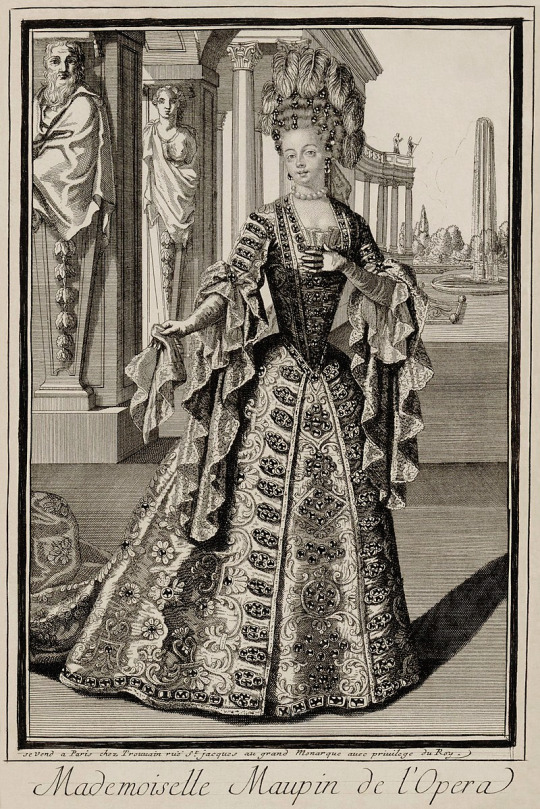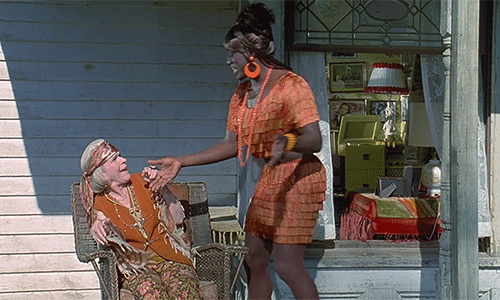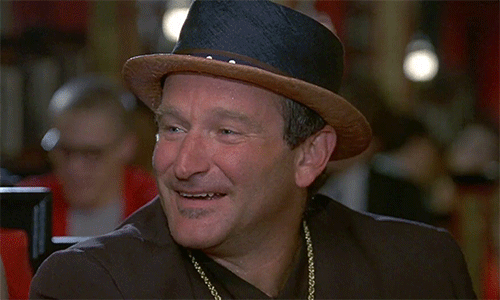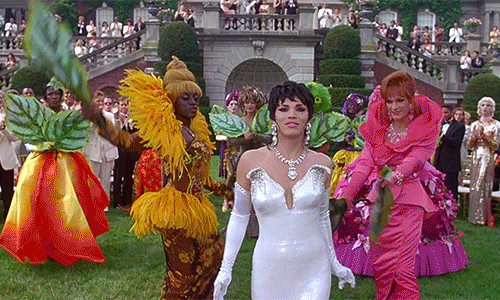#julie and the queers
Text

A BEAUTIFUL MARRIAGE WITH NO DIVORCE
#NOT SHIP ART. PLEASE DON'T TAG OR INTERPRET AS SUCH#welcome home#welcome home puppet show#julie joyful#frank frankly#senjart#the idea that playfellow co is trying to get frank and julie to be together romantically instead of just best friends#and how the queer identities they have is getting suppressed by the company#like how frank and eddie has to act ''distant'' because of the fear of being watched and not putting their relationship at risk#I feel it's getting stronger.#esp with the period the show was set in. gah!!!!!!
3K notes
·
View notes
Text
On this day of freedom, let's talk about how bald eagles are queer!

It starts with a female eagle named Hope and a male named Valor I. The two settled down to neat together, however Valor I wasn't a great dad. He did show up to incubate the eggs and basically never came around.
In comes another male, Valor II. He immediately did what a good eagle dad is supposed to, incubate, maintain the best, all that. This lead to him becoming Hope's new mate.
Here's where it gets interesting, Valor I didn't seem to mind and actually stuck around! Eventually Hope started mating with both of them, and Valor I even learned to be a good dad!

Unfortunately in 2017 Hope was killed by intruding eagles, but! The two male's actually stuck together and successfully raised their chicks!
Soon enough a new female named Starr came along and joined the two, and now she mates with both males every season!
This arrangement allows for the eagles to have a much more successful rate of raising chicks and fighting off other predators!
This particular story isn't the only one! Bald eagles have been seen in multiple arrangements including two females and one male!
#animals#nature#critters#wild life#wildlife#animal facts#facts#birds#bald eagle#pride#lgbt#lgbtq#queer#polyamory#america#fourth of july
4K notes
·
View notes
Text


Spot the difference
#artists on tumblr#digital artist#digital sketch#procreate#queer artist#digital illustration#digital painting#drawing#digital art#artwork#welcome home#welcome home puppet show#barnaby b beagle#barnaby beagle#welcome home barnaby#wally darling#julie joyful#frank frankly#eddie dear#sally starlet#meme
5K notes
·
View notes
Text

PHOTOSYNTHESIS
#this is my July patreon print if anyone is interested <3#bad at promoting myself here that's what instagram is for#trans art#trans artist#illustration#queer art#transgender#mossymountain#queer#transmasc#digital art
816 notes
·
View notes
Text


#queer#queer media#polls#queer media tourney#interview with the vampire#to wong foo thanks for everything julie newmar
249 notes
·
View notes
Text









cute lil welcome home headcanon post bc everything is totally fine in the world of welcome home and eddie is fine :))
frank : gay (canon), arospec, nonbinary (canon), and autigender.. fibro, eds, autism, chronic fatigue.
barnaby: oriented aroace, gay, and adhd.
eddie: gay (canon), aroacespec, trans.. dyspraxia, fibro, autism, fnd, and dyslexia.
wally: aroace and pangender.. autism (canon), npd, adhd, narcolepsy.
poppy: lesbian (canon) and trans (canon).. autistic, adhd, and dyspraxia.
howdy: aro and bi.. adhd.
julie: bi (canon), aceflux, genderfluid (clown).. stpd, autism, adhd, dyspraxia, selective mutism.
sally: bi, ace, trans fem, nonbinary.. autism, adhd, npd, hpd, pots, chronic migraines, eds, mcas, and arthritis.
[ID: pictures of the welcome home characters with the flags described above off to the sides of the images. the picture in the middle is the welcome home logo. All pictures have been edited with a pink hue and given a vintage look. End ID]
#welcome home#welcome home puppet show#barnaby b beagle#wally darling#welcome home wally#wh barnaby#poppy partridge#wh poppy#sally starlet#wh sally#julie joyful#wh julie#frank frankly#wh frank#eddie dear#wh eddie#howdy pillar#wh howdy#welcome home barnaby#welcome home frank#welcome home poppy#welcome home howdy#welcome home eddie#welcome home sally#canonically queer#canonically disabled#canonically autistic#headcanons#headcanon#eddies spaghetti original posts
126 notes
·
View notes
Text
gay people gazing at their love interest as they pass/walk away is something that can be so personal





#tyrus#flarrie#faberry#macdennis#andi mack#julie and the phantoms#jatp#glee#its always sunny in philadelphia#iasip#always sunny#lgbtq#queer#gay#lesbian#bisexual#pansexual#biromantic#panromantic#tj kippen#cyrus goodman#carrie wilson#flynn taylor#quinn fabray#rachel berry#ronald mcdonald#mac mcdonald#dennis reynolds
262 notes
·
View notes
Text





Be in awe of my tisim

(All art and other stuff was taken from the welcome home website so all credits go to clown and their crew)
#welcome home#partycoffin#welcome home arg#wally darling#julie joyful#poppy partridge#sally starlight#howdy pillar#eddie dear#frank frankly#barnaby b beagle#queer#arg#help#I’ve gone insane
218 notes
·
View notes
Text


to wong foo, thanks for everything! julie newmar (1995) dir. beeban kidron
588 notes
·
View notes
Text
Me when I realize that Frank and Eddie’s relationship is an allegory for not being able to be with the one you love and how Julie and Frank’s friendship constantly being pushed as romance by Playfellow is reminiscent of how men and women are always expected to be together romantically and the entire thing is just metaphorical for heteronormativity and I’m so normal you guys

#AGHHHHHHHHHHH#THIS IS WHAT CLOWN MEANT BY QUEER THEMES#IVE BEEN HIT#EVERYTHING HURTS#frank frankly#eddie dear#julie joyful#welcome home#welcome home arg
256 notes
·
View notes
Text
i enjoyed/watched most of these and im still mad(warrior nun isnt here considering it is coming back??)
#STOP CANCELING GOOD SHOWS AT ONE SEASON MAN#julie and the phantoms#the wilds#the society#i am not okay with this#first killl#lockwood and co#paper girls#teenage bounty hunters#diary of a future president#netflix#queer media
235 notes
·
View notes
Text

I had the idea of writing about some historical queer figures I find interesting and drawing them for this pride month as a little project of mine. I will see how many I'll have time to do, I have in mind at least four other historical people, but knowing myself, I'm not holding my breath for all of them. Julie d'Aubigny she been one of my favorite historical figures for years so I decided to start with her.
Historical Queer Figures - Julie d'Aubigny
Julie d'Aubigny, also known as Mademoiselle Maupin and La Maupin, was a French opera singer and fencer in the late 1600s. She was infamous for having sapphic relationships, being aggressive and dramatic, having androgynous presentation by occasionally dressing in men's clothing in public and being a fencer and duelist. Trans and genderqueer readings of her are very possible, but because none of the accounts of her (at least those I've read) suggests she ever used any other than feminine first names or terms or she/her pronouns about herself, I will use she/her pronouns when talking about her.
The French court absolutely loved to gossip and people were constantly making up libel about the people they didn't like, and Julie had a lot of enemies and was very controversial figure. During the 18th and 19th centuries she was written about a lot in these highly sensationalized Encyclopedias, where the rumors from her lifetime got increasingly wilder and sensational. She was accused for example of seducing noble women in court balls, burning down a convent and murder. There's not much primary sources left or available from her actual lifetime so distinguishing truth from fiction is not an easy task in her case. Kaz Rowe did great job in their youtube video about her to try to actually find out where the stories of her life comes from. They go through some great context too about the rumor industry in the French court at the time so I highly recommend checking it out.
CW: very brief mentions of child sexual abuse and self-harming
The Timeline of Most Concrete Events
Let's first go through the things that have at least a bit more backing than a rumor started 100 years after her death. Julie d'Aubigny was born between 1670 and 1673. Her father was Gaston d'Aubigny, the secretary of Louis of Lorraine, count d’Armagnac, who was Master of Horses to King Loius XIV, and her mother is unknown. She was probably brought to the Versailles court in 1682, where she got a full education including academic subjects, riding and fencing, usually only thought for boys. She was married off to a Sieur de Maupin (first name unknown) probably around 1687, when she would have been 14 to 17 years old. He apparently got a position from a southern province as a tax collector. The stories about her claim she remained in Paris, but I don't think there's evidence of this, though what we do know of her adult life does suggest she was estranged from her husband and lived apart from him. Nevertheless, she did end up in Marseilles, where she first appeared on stage in Marseilles Opéra between 1687 and 1690. She didn't have education in music, but her good looks and beautiful voice landed her the role.
Her first appearances in the Paris Opéra are listed to 1690, so that is probably when she had her debut there. She became a very talked about figure and she gained both friends and enemies in the opera and the court. She performed in the Paris Opéra for probably four years, after which she went to Brussels, Bavaria, where she performed with the Opéra du Quai au Foin at least during 1697 and early 1698, after which she returned to France to perform again with the Paris Opéra.
It was the period when her career peaked and she got a lot of leading female roles. Those roles in French opera were at the time soprano roles, but Julie's natural voice range was lower, contralto. (There's a whole thing where at the time she was described as mezzo-soprano, but the music historian consensus is that her range matches contralto in modern terms as opera was sang on lower cords across the board at the time. (I understand nothing about music theory so I just hope I managed to explain this correctly)) She excelled in secondary female roles of goddesses and warrior women. For the leading roles she had to sing on higher notes than was natural to her and the naive and dainty personalities of those roles clashed with her own personality. Some later retellings of her life claim she performed male roles for female singers (which was common practice, and these roles were often those of young boys), but all known records of her roles are female roles. In 1702 on the leading composers of the Paris Opéra, André Campra, wrote her a leading lady role in Tamcréde, which is often credited to have the first leading female role for contralto. But her perhaps most famous role was as Médée in Medus, which was considered to be a very difficult role. Apparently the original leading singer had fallen ill before the debut so Julie was quickly trained in her stead, but succeeded well and got a lot of praise for the role.
In 1703 Julie started an affair with Madame la Marquise de Florensac, who was said to have been the most beautiful woman in France. This is the affair of hers of which there's most evidence. De Florensac was married and had children, but she was also rumored to have many affairs. Julie lived quietly together with her for two years. They were described by a contemporary to have lived in perfect harmony, always spending time together and only appearing in public when necessarily. Julie deputed in her last role in 1705 and ended her career after De Floransac died of sudden fever. Nothing concrete is known about the rest of her life, not even how or when she died, but she is usually speculated to have died in 1707.
Parsing History from Fantasy
Chronologically the rumor that places earliest in her life was that she had "an affair" with count d’Armagnac (age 46 at the time), before she got married in the same year so as a 14 to 17 year old. There doesn't seem to be any actual evidence of this and even if that really happened, it wouldn't have been an affair, it would have been grooming and sexual violence. Related to it is the rumor that the count arranged her marriage and sent her husband away, but kept her in the court with him. Then she "got bored" of the count and ran away with an assistant sword-master, Séranne, to southern France. They got money by performing fencing matches in fairs and taverns while they were traveling till they got to Marseilles, where she first appeared in opera.
The stories of her in this period are generally written in a super nasty tone, and she (as supposed 14 yo) is written as the seductress and the adult men are written as the victims of her fiery temper and fitfulness. All these stories seem pretty unlikely though. The rumor about the count seems (unfortunately) most possible, but accounts from 18th and 19th century about these early events in her life don't seem to be based on any information from her lifetime. I find it most likely that the writers in 18th and 19th centuries were filling out the blanks we don't know from her life and painting her as this (in their eyes) degenerate seductress from an early age. An alternative possible explanation could have been that she indeed accompanied her husband to south, perhaps near Marseilles, where she then performed with the Marseilles Opéra. Many sources claim though that she performed with her maiden name there, which would be odd if she was living with her husband. I don't know where that claim comes originally, but it could be false of course. Although the generally proposed year of her marriage could also be false, which would explain why she at first performed with her maiden name, and later in Paris and always after that with her husband's name. That would not explain how she ended up going to Marseilles though.
The next and perhaps the most infamous and coolest story of her sets somewhere shortly before 1690. In that story she fell in love with a girl in Marseilles and the girls parents sent her to a convent to avoid a scandal. Julie went to the convent with the premise of wanting to become a novice. They tried to frame the girl's death by putting a dead nun's body into the girls bed and setting it on fire and then went on the run for couple of months. While on the run Julie was sentenced to death in absentia, but after returning to Paris and rekindling her relationship with count d'Armagnac, he got the king to pardon her. As amazing as this story is, it's very likely not true. It seems quite unlikely that the 15 to 19 year old Julie would have done that, but even more unlikely that she'd just get all her charges dropped and these crimes wouldn't have hindered at all her career, which hadn't even properly begun yet. The first surviving description of this incident comes from a letter of her contemporary court lady, Madame Dunoyer, who was basically an early gossip columnist and despised her. Her story doesn't mention Julie at all, but talks about a nun, who tried to frame her own death in a similar manner to escape with her male lover (which still sounds very unlikely story). The first surviving description that attaches that story to Julie, comes year after her death from the very suspect writings of a known liar, Cardinal Debois, who did personally know and hate Julie. He claimed that Dumenil, who was an actor in Paris Opéra the same time as Julie, related him the story, while also acknowledging he probably did it because he too hated her. So very likely not a true story, but possibly something that was rumored during her lifetime already.
In the stories of her, after escaping from the convent and before going to Paris, she traveled again in male attire and met Louis Joseph d'Albert de Luynes von Grimberghen, commonly known as count d'Albert. He was an interesting character in his own right, roughly her age, and like her, his real story is a little hard to parse from the legend (though in his case, he was a nobleman so there's also a lot of actual records of his life). In the story though, he thought she was a man, they had some disagreement, a fight broke out, she won, injured him and nursed him back to health. And then they had a brief affair before d'Albert went to war again. They were lifelong friends, so this is not entirely made up. It's entirely possible they had a brief affair (and according to many stories an on and off type of affair that was re-kindled at many points in their lives) and there was rumors about it even in her lifetime, but the story of this first meeting seems to lack validity.
Next in her stories she met Gabriel-Vincent Thévenard, who was another famous singer and her contemporary, either right before or right after she arrived in Paris. They became lovers and after Thévenard auditioned and got accepted into the Paris Opéra, he helped to get Julie accepted too. It is true that as far as we know, they both debuted in 1690. They were also said to have been life long friends and again it's possible they were lovers at some point, but the details of their meeting are difficult to know.
There are many stories about her antics of both of her times in the Paris Opéra. In those stories she fought duels, assaulted Dumenil with a cane, robbed Dumenil, had fights with men after they insulted her or another women or harassed other women, tried to kill herself after her love was not reciprocated, threatened to shoot a duchess in the head, threatened to slit Cardinal Debois' throat, bit Thévenard in the ear on stage and had affairs with men and women. According to Cardinal Debois the feud between Dumenil and Julie started because Dumenil was interested in her but she rejected him. The Cardinal was a liar but it does sound pretty believable. So if it's true and he spread in retaliation a lie that she burned down a convent, her beating him up or beating him up, stealing his valuables and returning them to him by humiliating him in front of other actors, would align well with everything else told about her personality. Maybe her retaliation wasn't exactly as in the stories, but if the other things about Dumenil were true, I'm sure she retaliated in some way. Same applies to her threatening the Cardinal's life. He wrote about it, but he was a liar, but, but because he was a liar who lied about her, it sounds like something she might do. Madame Dunoyer wrote about her threatening the Duchess of Luxembourg apparently because of jealousy over count d'Albert. The duchess was d'Albert's mistress at one point and apparently he even fought a duel over her in 1700. So there is some validity to this rumor, though the circumstances were perfect to fabricate that kind of rumor. I haven't found as much backing to other rumors, but many of them sound possible or at least maybe rooted in some reality and exaggerated.
The rumored explanation for why she left the Paris Opéra around 1694 was that she went into a court ball in men's clothing, kissed a woman on the dance floor and got challenge to a duel by three noblemen. They went outside and she won, but because dueling was illegal, she had to flee to Bavaria, and later when she returned, she was supposedly pardoned by the king again. In the more sensational versions of the story she killed the noblemen. This whole story is very unlikely. Even count d'Albert was imprisoned for engaging in an illegal duel (the one in 1700). He got eventually pardoned, but he was a nobleman and basically a war hero. The first surviving accounts of this story come much after her dead and it sounds more like a very exaggerated version of the other stories of her. There's many more plausible reason why she would have left to Bavaria. If her contemporaries descriptions of her behavior were even half true, those could have been scandal enough. Or if the rumors of her burning down a convent were circling that time already, that alone could have been damaging enough to her career that she thought it best to leave for a while.
In Bavaria, she's rumored to have another scandal. She supposedly became lover of the Max Emanuel, Elector of Bavaria, but she was too dramatic and after she stabbed herself with a real knife during a performance, the Elector decided she was too much, demanded her to leave Bavaria and gave her money for it. She supposedly threw the money to the feet of the messenger and left. The first surviving account of this story comes again from Madame Dunoyer, the details of which have changed, but were always quite exaggerated and unbelievable. Still the core events might be true, it's possible she was the Elector's lover for a while and it's also possible she stabbed herself on stage for real, being very dramatic as she was.
Was she queer?
There are enough accounts of her attraction and relationships with women from people who actually knew her, that I do find it very likely that she was sapphic. Cardinal Debois even implied she was exclusive interested in women or at least heavily preferred them, though other accounts by the people who knew her did talk about her attraction to men too. Her dressing in men's clothing is also mentioned enough times by her contemporaries that I do believe it. Because gender was so heavily tied to clothing and sexuality and fashion was less about what you wanted to wear and more about what you wanted others to think about you, I think she probably had some gender feelings. Even her aggressive and assertive behavior was very much seen as crossing gender boundaries. There's no more evidence of her feelings on gender than her androgynous presentation, so it's mostly speculation.
In conclusion, she was definitely a flavor of queer.

Julie circa 1700 in opera costume.
The most notable source I used:
Julie D'Aubigny: the 17th Century Sapphic Swordfighting Opera Singer, video by Kaz Rowe - I mentioned this before but it bears repeating
Research page by Jim Burrows - This was great since there's gathered multiple sources on le Maupin, historical and more recent, some of which are hard to access fully otherwise
Julie d'Aubigny: La Maupin and Early French Opera, LAPL blog post - It repeats most of the rumors of questionable origin about her as truth, but the sections about her career, which have more backing than just rumors, are really helpful
Mademoiselle De Maupin; Biographical sketches & anecdotes, The Dublin University Magazine - One of those questionable biographies of her from 1854, really only good as a source of what the rumors were after her death
Chevalier, Louis-Joseph, prince de Grimberghen, essay by Neil Jeffares - Biography of count d'Albert, which includes a lot of unsourced rumors about both le Maupin and d'Albert, but recounts his life events in great detail, and references to each claim show which parts are sourced well
#queer history#history#pride month#art#queer art#lgbtq history#sapphic art#digital art#portrait#historical art#historical queer figure#julie d'aubigny#julie de maupin
249 notes
·
View notes
Text






Every Film I Watch In 2023:
5. To Wong Foo, Thanks For Everything! Julie Newmar (1995)
#to wong foo thanks for everything julie newmar#patrick swayze#wesley snipes#john leguizamo#robin williams#stockard channing#queer film#my gifs#2023filmgifs
487 notes
·
View notes
Text

I love this series.
#artists on tumblr#digital artist#digital sketch#procreate#queer artist#digital illustration#digital painting#drawing#digital art#artwork#welcome home#wally darling#barnaby beagle#julie joyful#frank frankly#sally starlet#eddie dear#welcome home puppet show
3K notes
·
View notes
Text
what if welcome home is like a story about the queer erasure of the time and the show was canned because most of if not all the characters were queer and the current state is like the results of their world being taken from them
#welcome home#wally darling#barnaby b beagle#frank frankly#julie joyful#poppy partridge#eddie dear#howdy pillar#sally starlet#eddie x frank#frank x eddie#sally x julie#julie x sally#other queer stuff#This is a theory I’ve crafted on no sleep so like I’m going off stuff I don’t even beleive#But like the theory that the Playfellow Workshop intended Julie and Frank to be a couple to hide them both being queer has been a thing#We all know Frank and Eddie are gay#And Sally calls Julie “Juliet”#Maybe that’s all they can get away with#I’m tired I have no idea what I’m writing
158 notes
·
View notes

